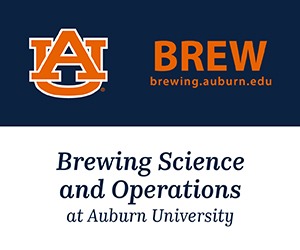How do commercial breweries lager so quickly?
TroubleShooting
Lagers should age for at least two months; we all know that. In commercial breweries and microbreweries, however, they take hardly any time for lagering or aging. Do they use enzymes or what?
Commercial brewers determine the length of their lagering period by defining what they want to accomplish during lagering. Most of the changes that occur during lagering do not require two months or more and hence, most lagers age for less than two months.
After lagering, most lager brewers want a reduction in diacetyl (butter flavor), acetaldehyde (apple flavor), and sulfur-based aromas (rotten egg); full carbonation; and an improvement in clarity. Most brewers consider diacetyl reduction to be the key goal of lagering. Once these objectives are met the beer is sent to filtration and is packaged. Different lagers require different lager times to achieve the same goals because they are brewed with different raw materials, yeast, and equipment. Although the differences may be small, lagering times may be affected.
In general, commercial lagers brewed in the United States spend seven days in primary fermentation and three to six weeks in lagering. The world’s best-selling lager spends around three weeks lagering, and the Rocky Mountain classic from Golden sits in the lagering tank for six weeks. Some beers do benefit from longer aging periods, especially stronger beers. Doppelbocks typically lager for well over two months. Strong beers mellow over time — obvious flavors that are present when the beer is young slowly meld into a complex palate of intriguing, hard-to-describe flavors.
There are some new ideas that allow brewers to lager their beers for a shorter time without significantly affecting flavor. However, to appreciate these ideas it is important to acknowledge one very important fact. Commercial brewers are in business to make money. This does not mean that commercial brewers do not care about the rich traditions of brewing or that commercial brewers will do anything to their beer to make more money — it is simply the fact of doing business. Unfortunately, some craft brewers have not accepted this fact and have lost a lot of money brewing excellent beers that could not sell for enough money to be profitable. Luckily, homebrewers do not have this problem!
As it pertains to this question, commercial brewers will not age their beer one day longer unless they feel it does something beneficial to their beer that can be used to help the business. Flavor complexity, shelf life, consistency, and marketing pizzazz are reasons a brewery may change its lagering time. What if lagering times could be reduced without negatively affecting the business of brewing? This would increase production capacity without any extra fermentation or lagering tank capacity — not a bad deal.
Time saver number one: In recent years some lager brewers have begun warming the beer between fermentation and lagering, usually from about 50° to 70° F. This process accelerates the conversion of alpha-acetolactate (a compound normally secreted by yeast) to diacetyl and also accelerates the uptake of diacetyl by yeast. Diacetyl reduction is one of the key objectives of lagering, so this technique is used by many brewers, especially brewers in Germany, where this idea originated.
This technique does not make the beer fruity, because fermentation is complete and the yeast have produced all of their fermentation aromas. Many commercial brewers can’t easily employ this method because their cellars are not designed to warm beer; they are designed to keep it cold. Homebrewers, on the other hand, can easily change beer temperature by simply moving it across the house!
To try this method ferment the lager at 50° F, rack the beer to the secondary, and move it to a room temperature area for two to three days. Then chill the beer to 32° to 40° F for lagering. Two weeks of lagering should be long enough for lighter lagers such as pils and helles.
Time saver number two: Yeast contact is a good thing. The key to flavor maturation is yeast. Increasing the contact between yeast and the compounds they are modifying can reduce lagering times. Some people think beechwood chips are just for marketing, but in reality they are a traditional method of improving lager times. Oddly enough, they are such a pain to handle that very few breweries in the world continue this tradition (chip trivia: most American lager brewers in the 1800s used “chip tanks” for lagering).
Another way to increase yeast contact with beer is to use non-flocculent yeast. Although this makes clarification difficult, it does accelerate the aging process. With modern centrifuge technology the clarification issue is less important. After the beer is properly aged, the yeast is removed using centrifugation. This method cannot be practiced at home because a pilot centrifuge costs about $70,000. Sorry!
Time saver number three: The most modern lagering technique combines warming beer to convert alpha-acetolactate to diacetyl and a high yeast-to-beer concentration. First comes centrifuge, then pasteurization. The beer is recirculated through a column filled with yeast for rapid “aging” then filtered. The result is continuous lagering. It reduces lagering time from weeks to about a quarter of a day! Warning: Do not try this at home.
My advice to homebrewers is to be patient. These time-saving methods were designed to improve profitability. The best that these methods will do is make a more profitable beer with as little flavor change as possible. Taste your beer during lagering and stop lagering when your palate tells you the beer is ready to bottle.

